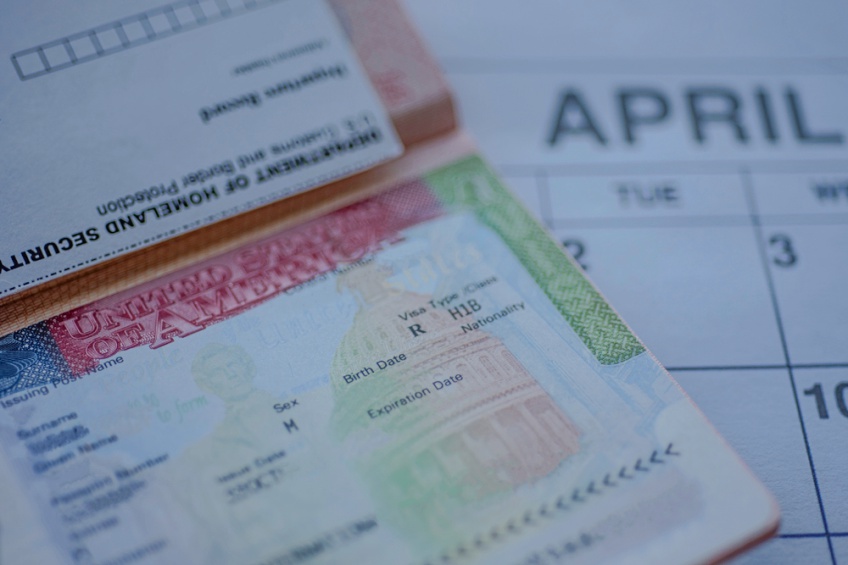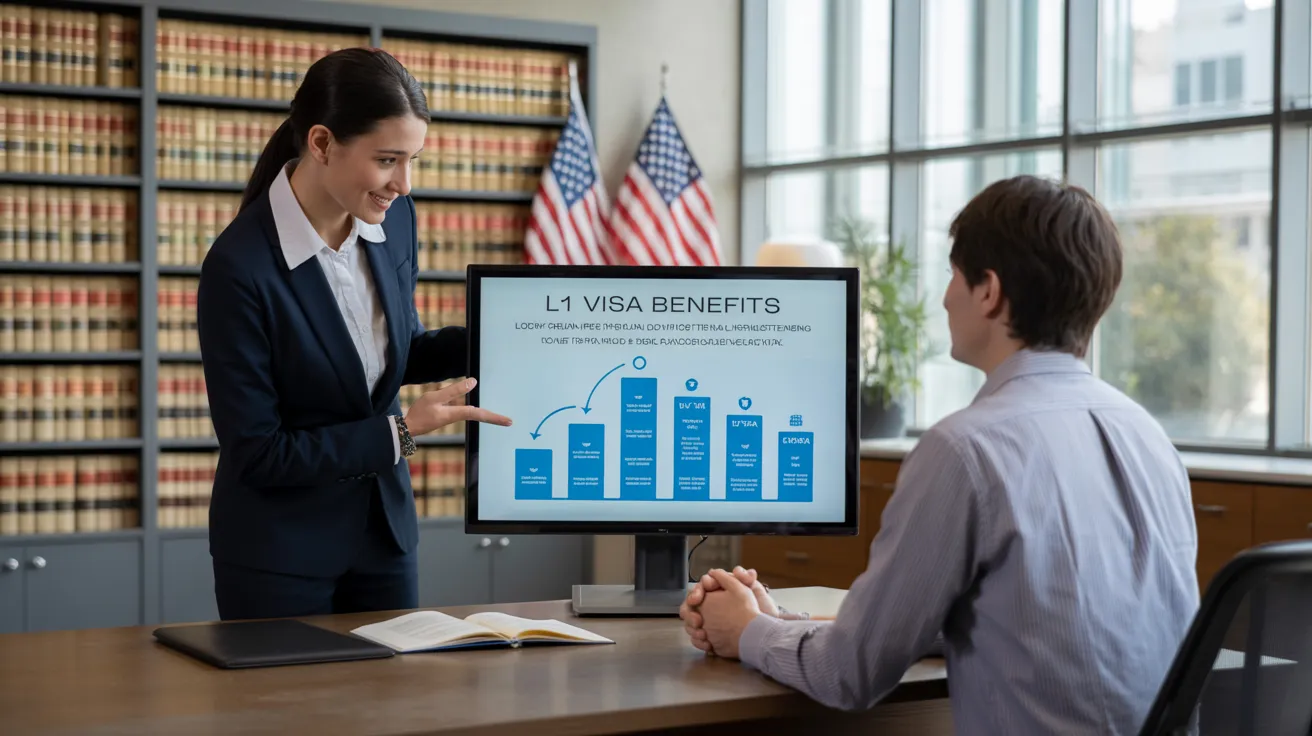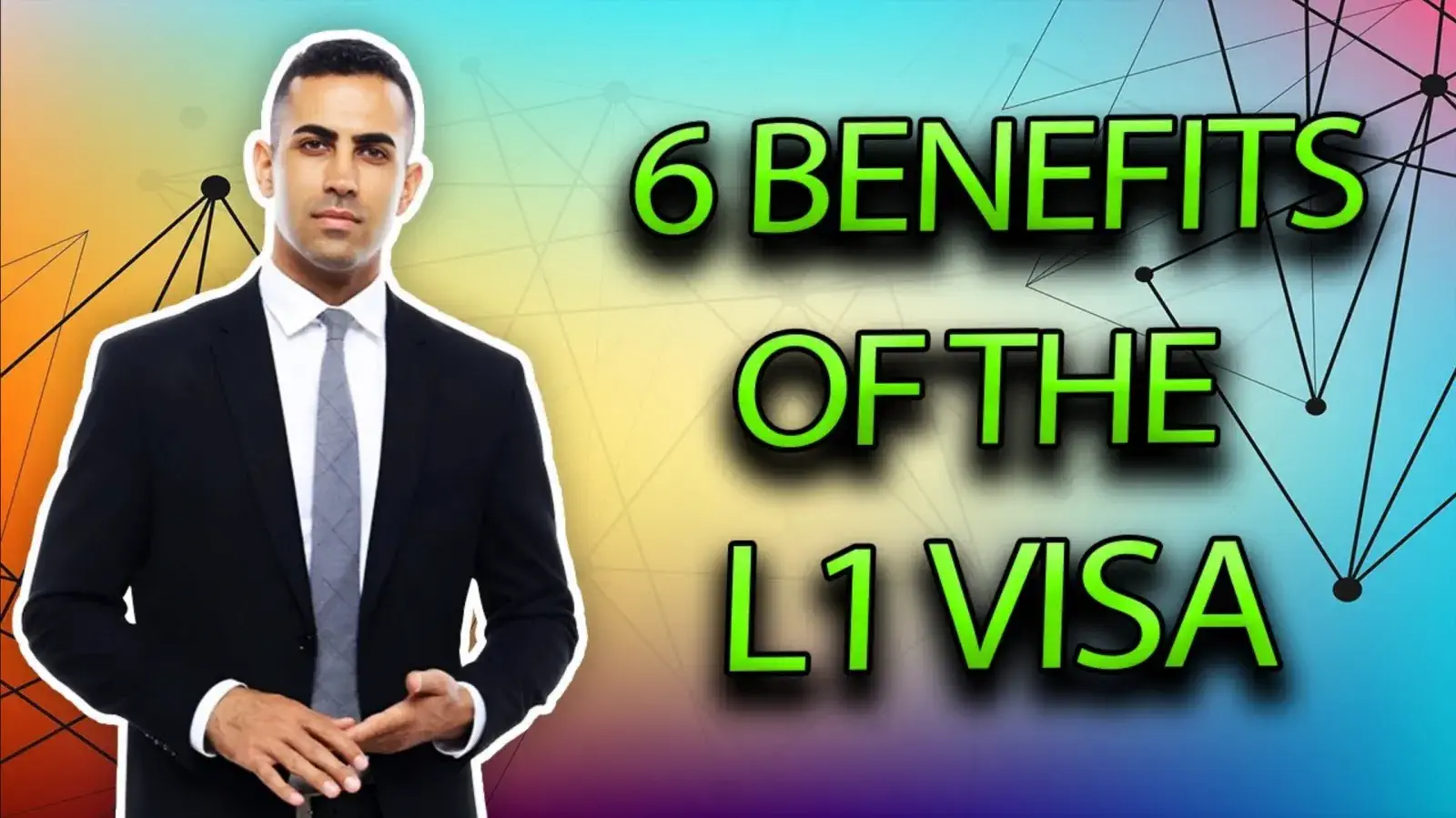Everything You Need to Know About the L1 Visa: Advantages, Demands, and Much more
The L1 Visa serves as an important device for international firms seeking to transfer staff members to the USA, assisting in both operational effectiveness and the transfer of specialized knowledge. With unique categories for execs and specialized experts, this visa provides countless advantages, consisting of possible paths to irreversible residency. Recognizing the qualification demands and application procedure is necessary for an effective change. As we take a look at the ins and outs of the L1 Visa, it ends up being clear that maneuvering its intricacies is vital for companies intending to take advantage of global skill effectively. What difficulties might you encounter in the process?
Introduction of the L1 Visa

Types of L1 Visas

Multiple kinds of L1 visas cater to the diverse demands of international companies wanting to move staff members to the United States. The 2 key classifications of L1 visas are L1A and L1B, each designed for certain duties and responsibilities within an organization. L1 Visa.The L1A visa is planned for supervisors and execs. This group allows firms to transfer individuals that hold managerial or executive positions, enabling them to oversee procedures in the U.S. This visa is valid for a first period of approximately 3 years, with the opportunity of extensions for an overall of approximately 7 years. The L1A visa is particularly advantageous for firms seeking to develop a strong leadership presence in the U.S. market.On the other hand, the L1B visa is assigned for staff members with specialized understanding. This includes people that possess advanced experience in specific locations, such as exclusive innovations or distinct processes within the business. The L1B visa is also legitimate for a preliminary three-year duration, with expansions readily available for as much as 5 years. This visa category is ideal for business that need staff members with specialized skills to boost their procedures and maintain an affordable edge in the U.S.Both L1A and L1B visas permit dual intent, implying that visa owners can request permanent residency while on the visa. Recognizing the distinctions in between these 2 categories is crucial for organizations preparing to navigate the complexities of staff member transfers to the United States successfully
Qualification Requirements
To get approved for an L1 visa, both the employer and the worker need to meet specific eligibility criteria set by U.S. migration authorities. The L1 visa is developed for intra-company transferees, permitting international business to move workers to their united state offices.First, the employer should be a certifying organization, which indicates it needs to have a parent firm, branch, subsidiary, or affiliate that is operating both in the united state and in the foreign nation. This partnership is essential for demonstrating that the employee is being transferred within the very same business framework. The employer has to also have been doing service for at the very least one year in both locations.Second, the worker has to have been utilized by the international business for a minimum of one continual year within the 3 years preceding the application. This employment has to remain in a managerial, exec, or specialized knowledge ability. For L1A visas, which accommodate supervisors and execs, the staff member has to show that they will remain to operate in a comparable ability in the U.S. For L1B visas, planned for staff members with specialized understanding, the individual must have special knowledge that contributes substantially to the firm's operations.
Application Process
Steering the application process for an L1 visa involves a number of important actions that must be finished accurately to assure an effective end result. The primary step is to establish the ideal category of the L1 visa: L1A for supervisors and execs, or L1B for staff members with specialized understanding. This distinction is considerable, as it affects the documentation required.Once the category is identified, the united state employer need to file Form I-129, Petition for a Nonimmigrant Worker. This kind should consist of detailed information about the firm, the employee's duty, and the nature of the job to be done in the U.S. Accompanying documentation normally includes evidence of the relationship in between the U.S. and foreign entities, proof of the employee's qualifications, and details concerning the work offer.After submission, the U.S. Citizenship and Migration Solutions (USCIS) will certainly examine the application. If accepted, the worker will be informed, and they can after that make an application for the visa at a united state consulate or consular office in their home nation. This entails completing Form DS-160, the Online Nonimmigrant copyright, and setting up an interview.During the meeting, the candidate needs to offer numerous papers, consisting of the accepted Kind I-129, evidence of employment, and any type of extra supporting evidence. Adhering to the meeting, if the visa is provided, the worker will get a visa stamp in their copyright, allowing them to enter the united state to benefit the sponsoring company. Appropriate preparation and comprehensive documents are essential to steering this process successfully.
Advantages of the L1 Visa
One of the remarkable advantages of the L1 visa is its ability to facilitate the transfer of crucial employees from international workplaces to the United States. This visa is specifically beneficial for international companies looking for to preserve uniformity in procedures and management across boundaries. By enabling execs, supervisors, and specialized workers to function in the united state, organizations can ensure that their most necessary skill is readily available to drive business objectives.Another considerable advantage of the L1 visa is its relatively simple application process compared to other work visas. Organizations can seek for the L1 visa without the requirement for a labor certification, which streamlines the recruitment of foreign workers. Moreover, the visa can be given for a preliminary duration of as much as 3 years, with the possibility of expansions, promoting long-lasting assignments.The L1 visa also gives a path to long-term residency. Workers on L1A visas (for supervisors and execs) can use for an Environment-friendly Card after one year, expediting their modification to irreversible status. This attribute is an attractive reward for gifted people looking for security in the united state workforce.Additionally, L1 visa holders can bring their immediate family participants to the united state under L2 status, allowing spouses and kids to live and research in the nation, improving the overall appeal of this visa group. Overall, the L1 visa functions as an essential device for worldwide businesses, promoting cross-border cooperation and talent flexibility.
Common Challenges
While the L1 visa supplies countless advantages for international business and their workers, it is not without its obstacles. One significant obstacle is the rigorous documents and eligibility requirements imposed by the U.S. Citizenship and Migration Provider (USCIS) Business have to offer thorough evidence of the foreign worker's certifications, the nature of business, and the qualifying connection between the united state and international entities. This process can be time-consuming and may require legal proficiency to navigate successfully.Another challenge is the potential for examination during the petition procedure. USCIS police officers might question the legitimacy of business procedures or the worker's function within the company. This scrutiny can result in delays and even rejections of the copyright, which can substantially impact the firm's operational strategies and the worker's profession trajectory.Furthermore, the L1 visa is linked to the sponsoring company, which implies that work modifications can make complex the visa status. If an L1 visa holder wishes to change employers, they should frequently seek a various visa classification, which can include complexity to their migration journey.Lastly, maintaining compliance with L1 visa laws is essential. Companies must ensure that their staff member's function aligns with the first petition and that the organization continues to meet the eligibility demands. Failure to do so can lead to abrogation of the visa, affecting both the staff member and the company. These obstacles require L1 Visa Qualifications detailed prep work and continuous monitoring to assure an effective L1 visa experience.
Tips for Success
To efficiently navigate the L1 visa procedure, precise preparation is critical. Start by thoroughly comprehending the details needs for the L1 visa group you are requesting, whether L1A for managers and executives or L1B for employees with specialized understanding. Collect all necessary paperwork early in the process, including proof of your employment history, organizational structure, and the nature of business operations.Engage lawful advice experienced in migration law to assist you via the intricacies of the application. A lawyer can assist guarantee that your application is total, precise, and compelling. They can additionally aid in preparing for prospective ask for evidence (RFEs) by proactively attending to locations that might elevate questions.Additionally, preserve clear communication with your company, who should provide important support for your application. L1 Visa Lawyer. Confirm that they comprehend their obligations, including submitting the essential requests and supplying paperwork that confirms your function in the organization.Prepare for the visa interview by exercising response to usual questions regarding your specialist history and the nature of your employment. Demonstrating confidence and clearness can significantly impact the result of your application
Regularly Asked Concerns
Can Family Members Accompany L1 Visa Holders?
Yes, member of the family can come with L1 visa holders. Spouses and unmarried children under 21 years old are qualified for L2 visas, which allow them to live and examine in the USA during the L1 holder's keep.
Just How Long Can L1 Visa Owners Remain In the U.S.?
L1 visa holders can initially stay in the U.S. for up to three years (L1 Visa). This period may be prolonged, allowing a maximum keep of seven years for L1A visa holders and five years for L1B visa holders
Is the L1 Visa a Double Intent Visa?

Can L1 Visa Owners Request an Eco-friendly Card?
Yes, L1 visa holders can request a permit - L1 Visa. The L1 visa supports dual intent, permitting holders to seek permanent residency while maintaining their non-immigrant condition, promoting a smoother changeover to a permit
What Occurs if an L1 copyright Is Rejected?
If an L1 copyright is rejected, the candidate may get a notification detailing the reasons for rejection. L1 Visa Requirements. They can appeal the decision, reapply, or check out alternative visa alternatives depending on their conditions and certifications
Conclusion
In summary, the L1 Visa functions as a crucial tool for international firms looking for to move staff members to the United States. Recognizing the distinctions in between L1A and L1B classifications, along with the qualification needs and application procedures, is essential for successful navigating of this non-immigrant category. The benefits provided, including structured applications and paths to long-term residency, additionally enhance its charm. Addressing usual challenges effectively can cause an extra beneficial end result in the copyright procedure.